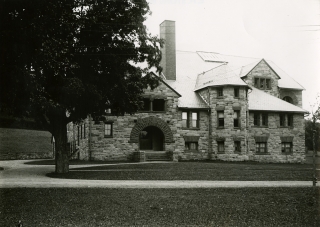comparison with that in eastern colleges, ranged from $1,500 for instructors to $4,000 for professors; by 1942 it had increased to $5,000 for professors and to $1,800 for instructors. As already noted, however, there were no reductions in salaries because of the depression. In 1924 the University instituted a faculty pension system for the two upper ranks by contract with the Teachers’ Insurance and Annuity Association of America, which in later stages was extended to include assistant professors and instructors, administrative staff members and non-professional employees. Faculty investigations chiefly by Professor Shortliffe, led the Trustees in 1931 to establish a group insurance plan through the Connecticut General Life Insurance Company, which embraced the teaching staff and certain others. When Taylor Hall was no longer needed for student use after the Student Union became available in 1937, the faculty took it over for the newly organized Faculty Club which was to fulfill a long-felt need for promoting informal contacts and recreational activities. Ten years earlier their wives, with Mrs. Cutten as prime mover, had formed the Woman’s
2nd row: Whitnall, Shepardson, Ewart, E. W. Smith, R. B. Smith, Langworthy, A. W. Smith
SENIOR FACULTY






